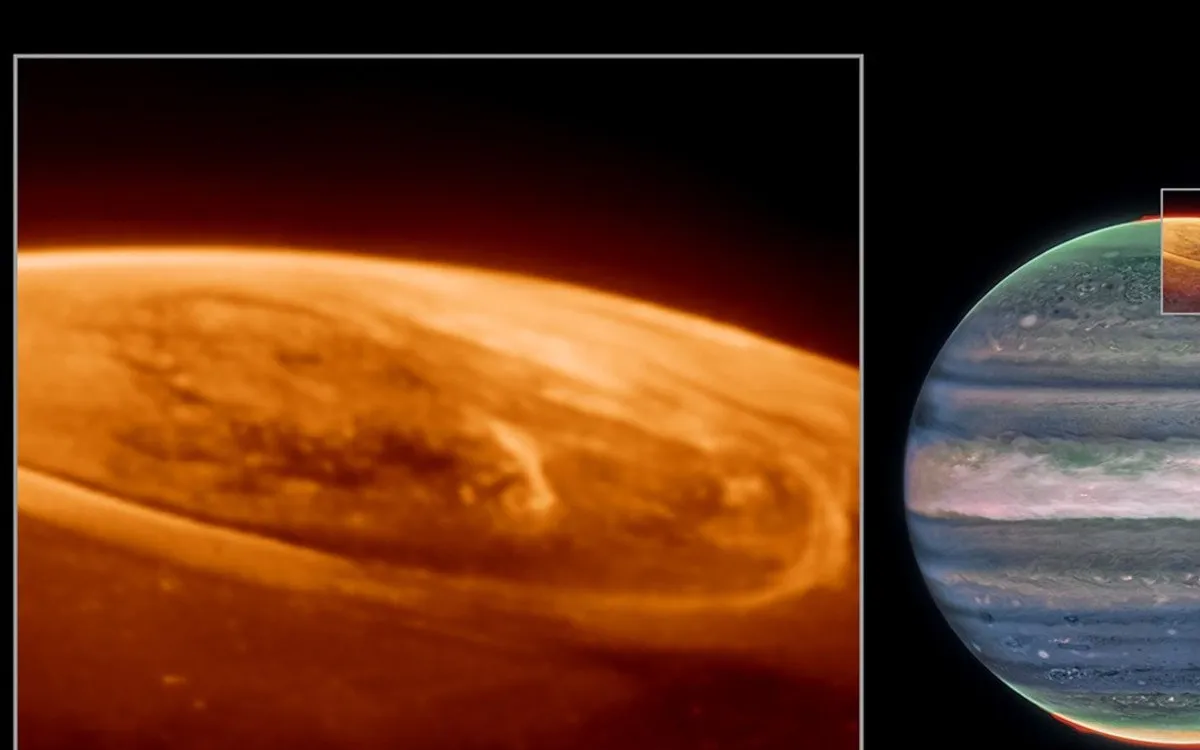
The NASA Webb Space Telescope has recently provided breathtaking new insights into the mesmerizing auroral displays of Jupiter. This advanced telescope has captured the gas giant's auroras in exquisite detail, revealing a vibrant light show that had never been seen before. Through its latest observations, astronomers have identified an intriguing discrepancy in the appearance of Jupiter’s auroras when comparing data from Webb and the Hubble Space Telescope.
Utilizing the NIRCam (Near-Infrared Camera) aboard the Webb telescope, researchers zoomed in on Jupiter's poles to analyze the planet’s auroral features. These auroras are significantly brighter than those observed on Earth, being up to 100 times more intense. Jonathan Nichols, a researcher at the University of Leicester in the UK and the lead author of a new study published in Nature Communications, expressed surprise at the rapid changes observed in the auroras. "We expected the auroras to fade in and out slowly, perhaps over a quarter of an hour," Nichols stated. "Instead, we observed the entire auroral region fizzing and popping with light, sometimes varying by the second."
On Earth, auroras occur when energetic particles emitted by the Sun interact with the planet's magnetic field and atmosphere, producing the stunning displays we know as the Northern and Southern Lights. However, Jupiter's auroras have an additional source of energy. The planet’s powerful magnetic field captures charged particles from its surrounding environment and accelerates them to tremendous speeds. Many of these particles are ejected into space by Jupiter's volcanic moon, Io, and when they collide with Jupiter’s atmosphere at high energies, they excite the gases, leading to a dazzling glow.
In their analysis of Jupiter’s auroras, scientists also studied emissions from a unique molecule known as the trihydrogen cation. This molecule forms when energetic particles knock an electron off a hydrogen molecule, which then reacts with additional hydrogen molecules. The research revealed that the emissions from the trihydrogen cation are far more variable than previously understood. Gaining insights into this molecule’s behavior is crucial for scientists as it enhances their understanding of how Jupiter's atmosphere cools and heats.
Simultaneously, researchers captured images of Jupiter’s auroras using the Hubble Space Telescope while Webb was conducting its observations, focusing on ultraviolet light. This dual approach led to the discovery of a perplexing discrepancy: the brightest light detected by Webb did not have a corresponding counterpart in the Hubble images. "This has left us scratching our heads," Nichols remarked. "To explain the combination of brightness observed by both telescopes, we need a mix of high quantities of very low-energy particles impacting the atmosphere, which was previously believed to be impossible. We still don’t understand how this occurs."
The findings from NASA's Webb Space Telescope not only provide a deeper understanding of Jupiter's auroras but also raise new questions about the dynamics of the planet's atmosphere. As researchers continue to analyze the data, they hope to unravel the mysteries of these stunning light displays and their implications for our understanding of planetary atmospheres in general.